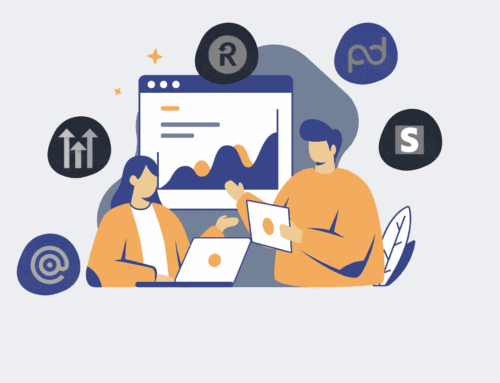How to Leverage AI Resume Insights for Proactive Talent Pipelining and Strategic Skills Gapping
In today’s competitive talent landscape, relying solely on reactive hiring methods leaves organizations vulnerable to critical skill gaps and missed opportunities. By strategically harnessing AI to analyze resume data, companies can move beyond mere candidate screening to actively identify emerging talent, forecast future needs, and proactively address skill deficiencies. This guide outlines a systematic approach to transforming your talent acquisition strategy into a forward-thinking, data-driven engine for growth and resilience.
Step 1: Define Your Strategic Talent Objectives and Anticipate Skill Gaps
Before diving into AI tools, it’s crucial to align your talent strategy with overarching business goals. Conduct a thorough internal audit to identify current and projected skill gaps across departments. This involves collaborating with business unit leaders to understand future project needs, technological shifts, and market demands that will impact your workforce. Are you expanding into new markets, adopting new technologies, or facing significant retirements? Pinpointing these areas will provide the specific criteria AI needs to search for within resume insights, enabling you to build talent pipelines that directly address anticipated shortages rather than just filling immediate vacancies. This foundational step ensures your AI efforts are precisely targeted and yield actionable intelligence.
Step 2: Implement an Advanced AI-Powered Resume Analysis Platform
Selecting the right AI platform is paramount. Look for solutions that go beyond keyword matching, offering capabilities like semantic understanding, sentiment analysis, and predictive analytics. The platform should be able to parse various resume formats, extract structured data (skills, experience, education, certifications), and identify nuanced connections between qualifications and job requirements. Consider integration capabilities with your existing Applicant Tracking System (ATS) and Customer Relationship Management (CRM) tools like Keap, which can centralize candidate data. Evaluate platforms based on their ability to learn from your specific hiring patterns and feedback, improving accuracy over time. A robust platform acts as the brain for your proactive pipelining strategy, turning raw data into meaningful intelligence.
Step 3: Integrate and Systematically Ingest Comprehensive Resume Data
Once your AI platform is in place, the next critical step is to feed it a rich, diverse dataset of resumes. This includes not only active applicants but also historical candidates, publicly available profiles (with appropriate consent and privacy compliance), and resumes sourced from various channels like career fairs and professional networks. Develop automated workflows to seamlessly ingest and normalize this data. Utilizing tools like Make.com, you can automate the extraction of resumes from emails, web forms, and other sources, pushing them directly into your AI analysis engine. Ensure data hygiene protocols are in place to clean and de-duplicate entries, maintaining a high-quality dataset that maximizes the accuracy and effectiveness of your AI insights.
Step 4: Configure AI for Deep Insight Extraction and Pattern Recognition
The power of AI lies in its ability to uncover hidden patterns. Configure your platform to extract specific insights relevant to your strategic objectives. This includes identifying not only explicit skills but also latent capabilities, transferable experience, and indicators of potential for growth. Train the AI to recognize industry-specific jargon, emerging technologies, and soft skills crucial for your organizational culture. Develop custom tags and categorization rules that align with your defined skill gaps and future roles. For instance, if you anticipate a need for “AI Ethics Specialists,” configure the AI to flag experience in related fields like data governance, regulatory compliance, and philosophical inquiry, even if the exact title isn’t present.
Step 5: Analyze AI-Generated Insights for Proactive Talent Pipelining
With the AI actively processing resume data, your focus shifts to interpreting and acting upon the generated insights. The platform should provide dashboards and reports highlighting concentrations of specific skills, emerging talent pools, and potential candidates for anticipated roles. Use these insights to segment your talent pool strategically. Identify high-potential individuals for future leadership positions, technical experts for specialized projects, or individuals whose skill sets align with future strategic initiatives. This allows you to create targeted “warm” pipelines for critical roles, significantly reducing time-to-hire when those needs inevitably arise. Regular review of these insights is crucial to adapt to evolving market and business needs.
Step 6: Proactively Engage with Identified Talent Through Targeted Outreach
Merely identifying talent isn’t enough; proactive engagement is key to converting insights into hires. Develop personalized outreach strategies based on the AI-generated profiles. Instead of generic mass emails, craft messages that acknowledge specific skills, experiences, or potential alignment with future opportunities. Utilize automation platforms to schedule tailored communications, nurture relationships over time, and keep your organization top-of-mind. This could involve inviting candidates to webinars on relevant industry trends, sharing thought leadership content, or offering early insights into new projects. The goal is to build genuine relationships with potential candidates *before* a formal vacancy arises, making them more likely to consider your organization when the time comes.
Step 7: Continuously Refine AI Models and Strategic Talent Pipelining Processes
The talent landscape is dynamic, and so too should be your AI and pipelining strategy. Regularly evaluate the performance of your AI models, assessing the accuracy of its insights and its effectiveness in identifying desired talent. Gather feedback from hiring managers on the quality of candidates sourced through AI-driven pipelines and use this data to retrain and refine your AI algorithms. As business objectives evolve and new skill gaps emerge, update your AI’s configuration and search parameters. This continuous feedback loop ensures that your talent pipelining efforts remain agile, relevant, and consistently aligned with 4Spot Consulting’s commitment to strategic, future-proof talent acquisition.
If you would like to read more, we recommend this article: The Strategic Imperative of AI in Modern HR and Recruiting: Navigating the Future of Talent Acquisition and Management









